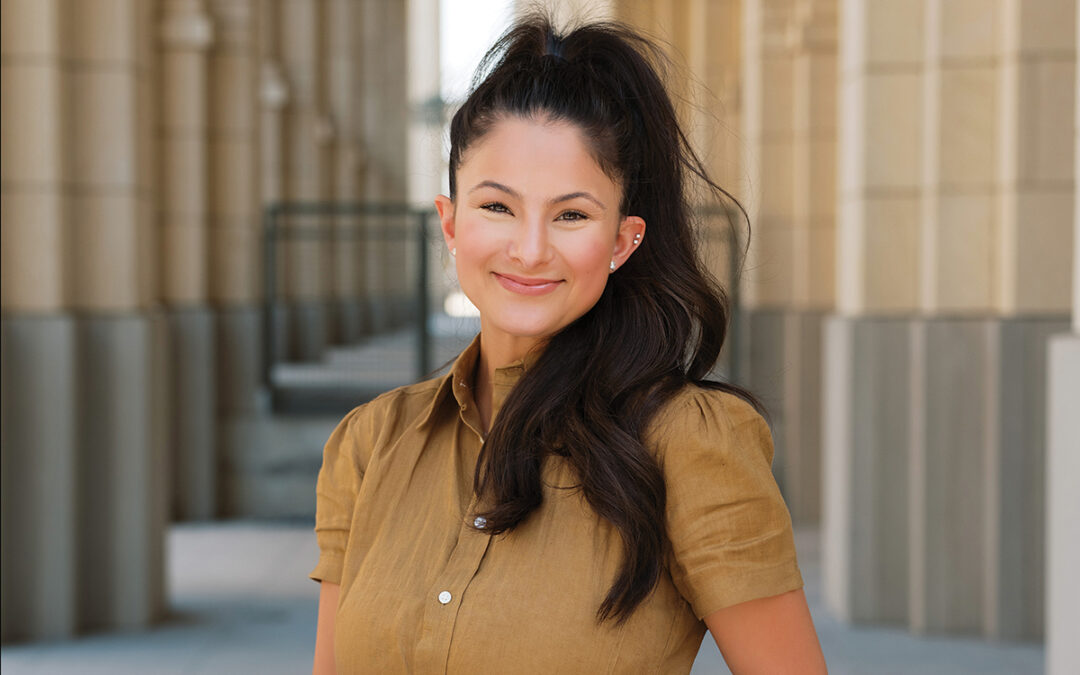Once San Antonio’s founding nearly 400 years ago, the city has amassed a substantial physical record — artifacts and documents — without stopping in its eventful history to figure out what to do with all this stuff. Not long ago, for instance, a ceremonial sword turned up in an office in City Hall, the gift of some long-ago foreign dignitary, and something that can’t be filed, digitized, or — heaven forbid — tossed or sold.
What to do? In the old days, the sword would have been squirreled away in some out-of-the-way place by a conscientious employee, perhaps to be forgotten until the next office reconfiguration. That’s where Amanda DeFlorio came in last January, as the first-ever city archivist, with a mandate to round up centuries worth of historic items, previously stored and kept on an ad-hoc basis. The position was created at the recommendation of City Clerk Leticia Vacek, “who recognized the importance of San Antonio’s history, not just to the city, but to Texas and the rest of the world,” says DeFlorio.
When the city archivist’s job was Web-posted a little more than a year ago, DeFlorio was in her second year as a librarian/archivist in the Texana/Genealogy Room of the San Antonio Public Library’s Central Library. As a transplant from Michigan, she had received a quick but intensive course in local and Texas history from library patrons who called the department for research help. Still, when she saw the posting, “I thought, “They’ll be looking for someone with 20 years’ experience.'” As she scrolled through the description, she realized that it fit her background and interests: “I was reading along, and I thought, “I can do that. Go for it!'” At age 26, DeFlorio already had earned a master’s degree in information science from the University of Michigan, concentrating in archives and records management. For her undergraduate degree, also from Michigan, she had double-majored in Arts and Ideas in the Humanities and French and Francophone studies.
As a graduate student, she had worked with manuscript collections in the university’s Bentley Historical Library, organized a church archive and interned in the photo archives at the Smithsonian Institution’s National Museum of the American Indian. Her love of archival work started in college, when she took a course called introduction to historical research. Students had a semester to do original, primary-source research on the topic of their choice. DeFlorio picked student protests at the university against the Vietnam War. “I got to read old student newspapers, draft board records, all kinds of things,” she remembers. “For me, the fun was in finding all this information, not writing about it. That helped me decide to be a librarian, rather than a scholar.”
Reared in Royal Oak, Mich., and educated in Ann Arbor, DeFlorio had never lived anywhere but her home state, except for a junior year at the University of Lausanne, Switzerland. “I never thought I would live in the South,” she says, but that changed when her then-fianc8E, Paul DeFlorio, an emergency physician in the Air Force, was assigned to Lackland AFB. Amanda applied to the San Antonio Public Library and was considering another job when the Texana position opened up. There, she got to do a little of everything that interested her — helping patrons with research requests, processing manuscripts and working with the rare books from the Hertzberg Collection, including first editions by Charles Dickens. She even made boxes for miniature books. “I’ve always liked the arts-and-crafts part of being a librarian,” DeFlorio says, smiling. When she was offered the city archivist’s position, she accepted with one concern. “I’m sometimes mistaken for younger than my age,” she says. “I wasn’t sure if people would take me seriously, whether I could project authority.” A challenge of her position is that while the city had done a good job of hanging onto historically significant materials, there had been no central facility for keeping them. “There was a collection of antique coins on display in the finance office, old midwife appliances in the Health Department, letters from Santa Anna in the city clerk’s office,” DeFlorio says. “There’d be someone in each department who was unofficially in charge of these things.”
As the brand-new city archivist, it was her responsibility to find out where such items were kept and to persuade their keepers to turn them over to her for the previously nonexistent city archives. DeFlorio started by writing a mission statement for the archives, with input from several departments, and working out a set of policies with the City Clerk’s office, to which she reports. Ordinary records still belong to the departments that generated them, but those of historical significance — as well as artifacts — are in the care of the city archives. Making this paradigm shift required the young archivist to practice diplomacy. “You don’t want to seem to be asking people to turn things over because they’ve done a bad job,” DeFlorio says. Early last year, she made it her job to visit each department’s office, scattered over several buildings. “I let them know what kind of resources the archives would have, what kind of security,” she says. If necessary, she left her card for staffers who needed time to find their artifacts – or to consider the wisdom of letting them out of the office.
Fortunately, funds for the new resource had been raised by a partnership among the city clerk’s office, the public-library system and its support group, the San Antonio Library Foundation — most notably a $98,000 grant from the National Archives Foundation. The city archive occupies a comparatively small portion of the municipal records facility at 719 S. Santa Rosa, where DeFlorio has about 39,000 square feet of space in the temperature-controlled stacks at the rear of the building. She has a small office, but is still operating as a one-person department.
City Clerk Vacek “is a strong supporter of the idea of a City History Center,” says DeFlorio. In an ideal world — or one with lots more funding — she’d be working with at least one assistant in a free-standing center, with exhibit space for the artifacts, a photo library with an online presence, a research room for visiting scholars and other researchers and meeting rooms for historical and genealogical groups. The center would offer historical programs open to the public, and the archives would have a wider scope for collecting. At present, DeFlorio says, “We are only accepting city records. Until we have a City History Center, we are regretfully declining any other kinds of donations.” The history center, she has been told, might be realized in as few as two years or as many as five. As a military spouse, she realizes her own plans may change. Her husband’s service commitment will be up in 2009, she says, “and after that, we’ll be looking at options.”
Taking stock of her first year in the archives, she says, “We have established a solid foundation. We are bringing in historical city records all the time and are well on our way to getting through the backlog of records.” She’s still having fun with discoveries, too, “constantly coming across exciting documents that had been thought lost or destroyed.” During her second year on the job, she hopes to clear the rest of the processing backlog and begin reaching out to “individuals and organizations that are not officially tied to city government but are integral to a full understanding of San Antonio’s history,” especially through an increased Internet presence. If there’s one really important thing she has learned through her experience as a guardian of San Antonio’s history, she says, it’s that “you don’t have to know everything yourself, you just have to know where to call to find help with your questions.”
Some days, she says cheerfully, “I’m still terrified. But we’ve made a lot of progress, and we’re going to make a lot more.”
Author: Paula Allen
Photographer: Janet Rogers









0 Comments